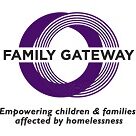March 20, 2020 – Dallas Observer – Silas Allen
First, the good news: After several years of steady increases, the number of homeless people living in Dallas and Collin counties fell this year, according to the results of the city’s annual homeless census.
The bad news is that Dallas’ efforts to reach out to some of its most vulnerable homeless people seem largely to have succeeded in moving those people from one place to another, but not getting them off the streets and into housing.
“Overall, our system that we have for outreach in Dallas and Collin County is not working,” said Carl Falconer, president and CEO of Metro Dallas Homeless Alliance. “What it looks like overall is we’re moving people around. We’re moving people from block to block, community to community and neighborhood to neighborhood.”
Falconer presented the results of the Dallas metro area’s annual Point in Time count Thursday morning during the organization’s annual State of Homelessness Address. Dallas, and cities across the country, conduct the annual census on a single morning or night in January, in the hopes that cold weather will drive more people into shelters, where they’re easier to count.
During this year’s count, volunteers tallied 4,471 homeless people in Dallas and Collin counties, a 1.4% decline from last year. But the area’s population of unsheltered homeless people — those who spend their nights outdoors, in places not meant for human habitation — climbed by 11.5%.
That uptick is a continuation of a years-long trend: Unsheltered homelessness roughly doubled between 2016 and 2019, according to previous years’ Point in Time counts.
Some of this year’s uptick is probably due to the weather, Falconer said. This year’s count took place on the evening of Jan. 23, a night when temperatures bottomed out in the 50s. Previous years’ counts have happened on colder nights, which tend to drive people who would otherwise be sleeping on the street into shelters.
But Falconer said the system that’s in place for helping homeless people in Dallas and Collin counties doesn’t do a good enough job of working with people who are living on the streets to get them into housing. Falconer said that issue isn’t the fault of any single agency or outreach team but is a system-wide problem.
The decline in overall homelessness in the Dallas area runs counter to a national trend. Nationwide, there was a 3% uptick in overall homelessness over last year, according to a report released last month by the U.S. Department of Housing and Urban Development.
One strategy Falconer said is working well in Dallas is called diversion. The idea is to help families who show up at a homeless shelter looking for a place to stay find an alternate solution, in some cases preventing them from becoming homeless at all. Sometimes that means finding family members who can offer them a place to stay for a while.
Other times it means mediating an agreement between families and landlords that keeps them from being evicted. Family Gateway, a homeless shelter for families and children, began using that approach recently, and Falconer said it contributed to a drop in the number of homeless families with children in the city.
What’s worrisome, Falconer said, is the number of families in the area who are on the verge of homelessness. School districts in Dallas and Collin counties reported that about 6,000 students are in families who are doubled up in homes with other families.
“At least they were still housed, but the reality is that they’re one emergency, one car breakdown or one medical emergency away from being homeless or losing their temporary situation,” he said.
Falconer said the coronavirus crisis has taught communities across the country several lessons about themselves. It’s shown them how connected people are to one another, even if they wouldn’t otherwise think of themselves that way. It’s also shown them the lengths they’ll go to look out for one another. If, once that crisis is over, cities would apply those same lessons to the problem of homelessness, they could end the problem once and for all, he said.
“If we use these same principles, if we follow these same rules, if we use these same guidelines, if we use these same ideas and values to end homelessness, we will do so,” Falconer said. “We can use the same things — our connectedness, our community, the strength of our community, the lengths that we’ll go to. We can do this, and this is one of the things that coronavirus is teaching us.”
Click here to see full story.
